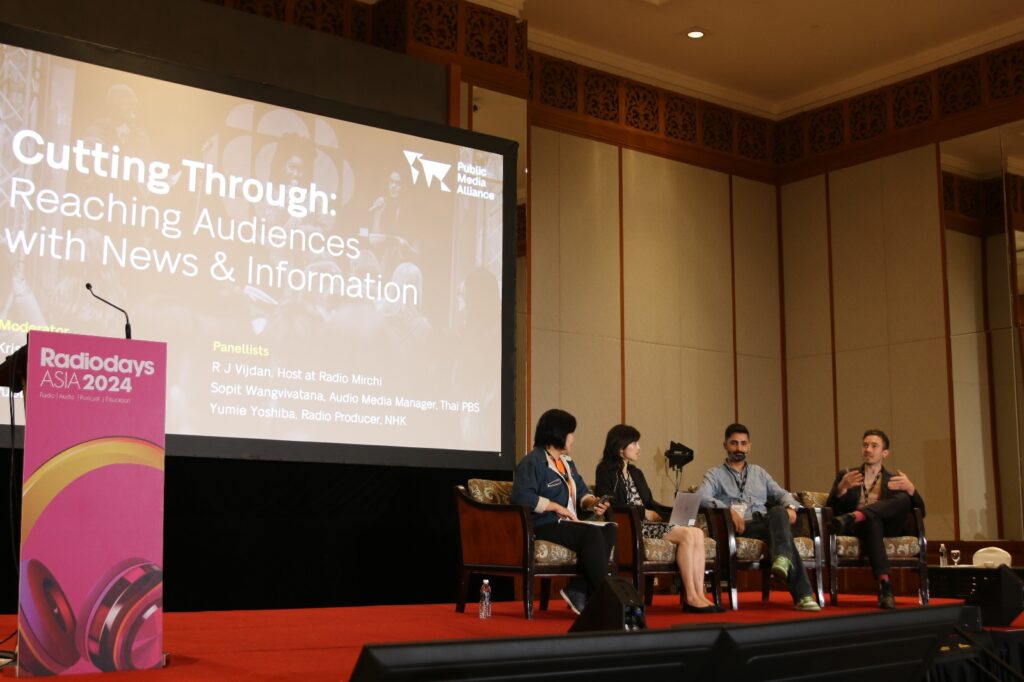By: Chen Yin Ying
In a cluttered and fragmented information ecosystem, radio networks are striving to provide clarity to audiences by providing trusted and accurate news and information. As news shifts to digital and news avoidance grows, radio has to cut through, providing essential information that reaches audiences.
Firstly, Sopit Wangvivatana, Audio Media Manager at Thai PPS, highlighted the challenges they face in reaching audiences primarily reliant on traditional radio. Without access to radio frequencies or the ability to advertise, Thai PPS focuses on online media to expand its reach. “Thai PPS now offers over 30 real-time programs online,” Sopit expressed, emphasising the network’s shift to digital platforms. Thai PPS also utilises AI text to speech technology, broadcasting in both Thai and English to minimise misunderstandings.
Yumie Yoshiba, a radio producer from NHK, discussed strategies for ensuring radio’s relevance in the news industry. NHK Radio has seen a slight increase in listenership through catch-up streaming. To attract younger audiences, NHK has introduced entertaining content like “News Pekopa” and “Gachimon!” featuring popular influencers and artists, and has expanded its reach by actively engaging on social media platforms.
Due to the regulations in Kashmir’s news industry, Vijdan Saleem, host from Radio Mirch, faced many challenges in reflecting the situation of the city, in an interesting and entertaining way to interest the audience without going against regulations. As he was unable to share the news directly, he shared his solutions to challenges through news, music, storytelling with certain words that resonate with audiences’ feelings. “I always believed that creativity in expression is important to avoid conflict,” said Vijdan.


